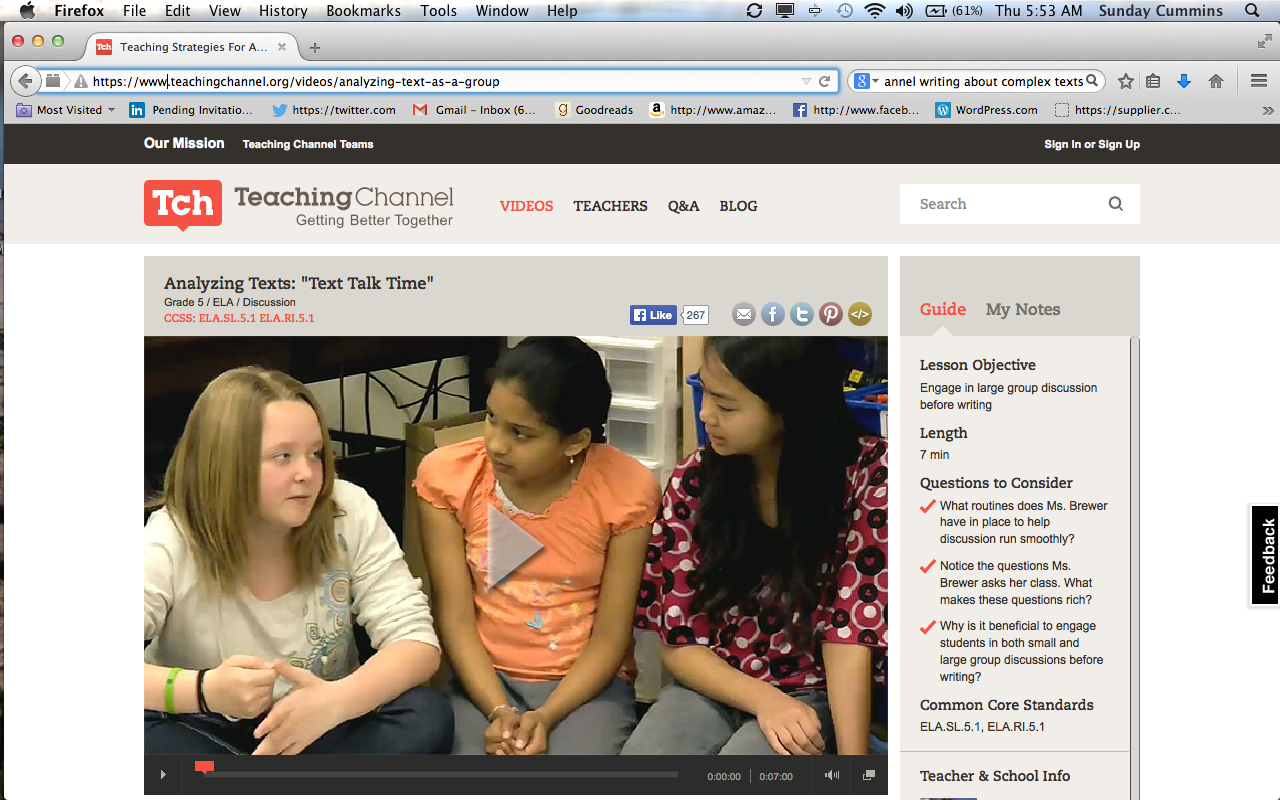
Love this short video clip on the Teaching Channel of a 5th grade teacher helping students make meaning of informational text through conversation. The students sit in a circle for a 20 minute discussion; they signal to the teacher with two fingers when they have a thought to add to the previous student’s comment or a thumbs up when they want to introduce a new thought (including questions they have about the text). Stacy Brewer, the teacher, facilitates the conversation, trying to make sure that all students are provided with an opportunity to contribute and trying to help students listen carefully and build or develop understanding through conversation. Prior to this – the students have met in small groups to talk about the text and Stacy coaches the groups! (To figure this out, I watched a video that is an overview of her structure–see below.) During the small group and large group discussion, the “text” is fully present as the students are asked to let the group know what part of the text they are talking about, as the students are asked to return to the text to help another answer a question, etc. In this clip, the text they have been reading is in a “textbook” and it is on the journey of Lewis and Clark. (Evidently, they have read this text and made some notes–this might include shared reading for some, partner reading, or independent reading.)
After discussing notes, questions, etc. Stacy poses a question for Turn and Talk conversation. She’s written this question on a sentence strip (card stock) for all students to view – “How does the author feel about Lewis and Clark?” Then they regroup and discuss the possible answers – referring to the text to support their answers.
Stacy poses another question – “What is the author’s viewpoint of exploration?” and this time she provides a sentence frame written on a strip – “The author thinks exploring is____.” After more discussion, the students are asked to return to their desks and write in response to the two questions.
There is an additional video (5 minutes) from this lesson that shows what happens just after “Text Talk Time” – with Stacy meeting with a small group of students who need additional support – to engage in more conversation and help them plan for writing. “When we talk about things it gets our brain ready for writing” – Stacy.
Beautiful structure with lots of access points for a group of diverse learners. There is a lot of potential for this to happen with the structure she has created.
Two short, easy, free videos – that provide a lot of content for us to consider in our practice.
First video – Analyzing Texts: “Text Talk Time” https://www.teachingchannel.org/videos/analyzing-text-as-a-group
Second video – Analyzing Texts: Putting Thoughts on Paper https://www.teachingchannel.org/videos/analyzing-text-writing
Video that is an overview of the whole process – from small group student-led “brainstorm” to whole group to small group support lesson – https://www.teachingchannel.org/videos/analyzing-text-lesson.
